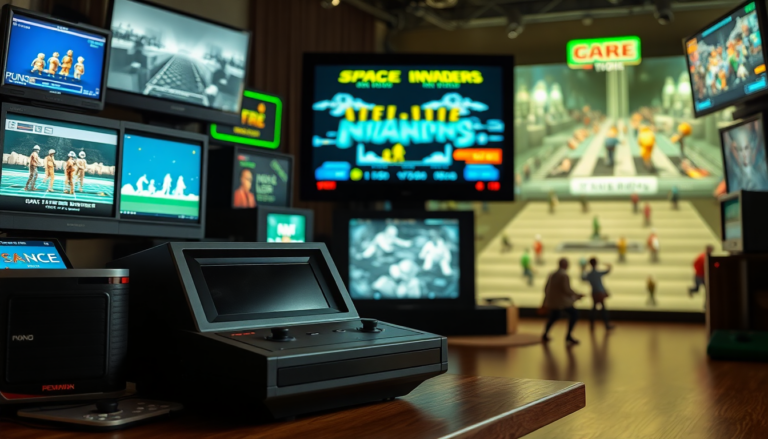Argomenti trattati
The beginnings of AI in gaming
Artificial intelligence (AI) has played a pivotal role in shaping video games since their inception. The concept of AI in gaming emerged as early as 1948 with the game Nim, marking the dawn of intelligent behavior in non-playable characters (NPCs). Unlike academic AI, which focuses on machine learning and complex decision-making, game AI aims to enhance the player experience through responsive and adaptive gameplay. The golden age of arcade games saw the introduction of AI opponents, characterized by graduated difficulty levels and distinct movement patterns. These innovations laid the groundwork for the sophisticated AI we see in modern gaming today.
How AI enhances player experience
Modern video games leverage advanced AI techniques such as pathfinding and decision trees to guide NPC actions. These mechanisms often operate behind the scenes, contributing to the immersive experience without players even realizing it. For instance, in iconic titles like Mike Tyson’s Punch-Out!!, AI opponents exhibited distinct behaviors that adapted to player strategies, creating a more engaging challenge. The evolution of AI has revolutionized player interactions with technology, enabling NPCs to respond to player actions in real-time, thus enhancing gameplay dynamics.
The sophistication of game AI
While many equate game AI with true intelligence, it is crucial to understand that it operates under a different paradigm. Game AI incorporates algorithms from various fields, including robotics and computer graphics, but it doesn’t necessarily fulfill the criteria of genuine intelligence as defined in cognitive sciences. Instead, game AI is often a blend of heuristics and automated computations that create a convincing illusion of intelligence. This distinction is vital as it shapes how developers approach AI in games, focusing on enhancing player experiences rather than achieving true mimicry of human behavior.
Historical milestones in AI development
The journey of AI in gaming has been marked by several key milestones. The early 1950s saw the creation of programs capable of playing checkers and chess, setting the stage for more complex AI implementations. By the 1970s, single-player modes featuring enemies began to surface, showcasing basic AI patterns based on pre-defined movements. The golden age of arcade games, particularly with titles like Space Invaders and Pac-Man, demonstrated how AI could adapt to player actions, increasing the challenge and engagement levels. This era established foundational principles that continue to influence game AI development today.
The role of NPCs in gaming
Non-player characters (NPCs) are integral to the immersive experience of video games. They populate game worlds, provide quests, and contribute to storytelling. Advances in AI have enabled NPCs to demonstrate adaptive behaviors, making interactions more realistic and dynamic. Modern NPCs can now respond intelligently to player actions, changing tactics in combat or altering dialogue based on prior interactions. The integration of deep learning techniques has significantly enhanced NPC realism, allowing them to learn and adapt, which adds depth to gameplay.
The challenges of developing intelligent NPCs
Despite significant advancements, developers still face challenges in creating NPCs that enhance gameplay without compromising player experience. Striking a balance between realistic behavior and functional gameplay is paramount. Overly complex NPCs can frustrate players, while overly simplistic ones may fail to engage. Additionally, the computational demands of advanced AI techniques can limit their implementation, particularly in expansive open-world games where numerous NPCs interact simultaneously. Developers must navigate these challenges to create a seamless gaming experience that captivates players.
Future of AI in gaming
The future of AI in gaming is promising, with ongoing research focused on enhancing the complexity and adaptability of NPCs. Techniques such as generative adversarial networks (GANs) are being explored for content creation, allowing for dynamic environments that respond to player actions. AI’s role in procedural content generation is also gaining traction, enabling developers to create unique gameplay experiences tailored to individual players. As AI technologies continue to evolve, the possibilities for enriching gaming experiences are virtually limitless.
Conclusion
In summary, the evolution of artificial intelligence in video games has significantly transformed how players interact with digital worlds. From the early days of simple algorithms to today’s sophisticated AI-driven experiences, the journey has been remarkable. As technology advances, the integration of AI will only deepen, creating richer, more immersive gaming experiences that resonate with players on multiple levels.

